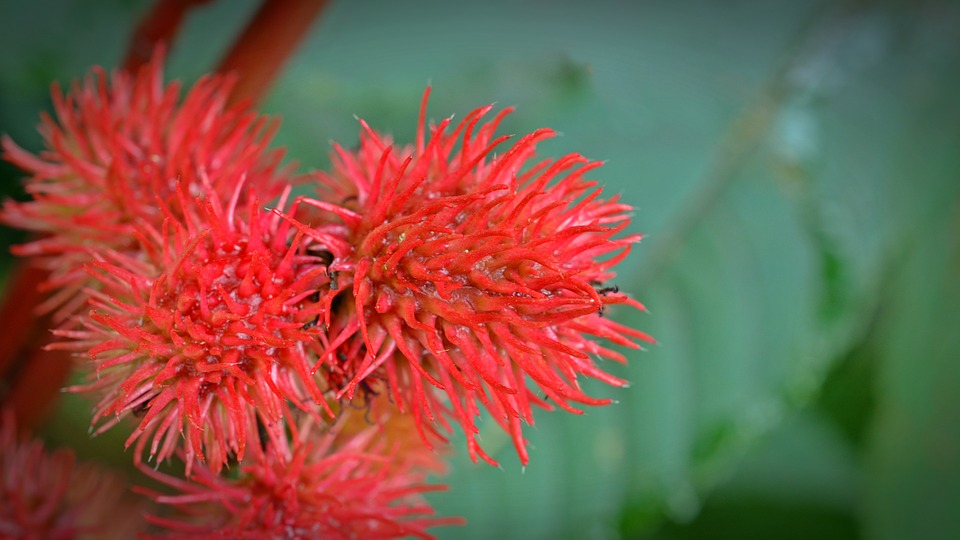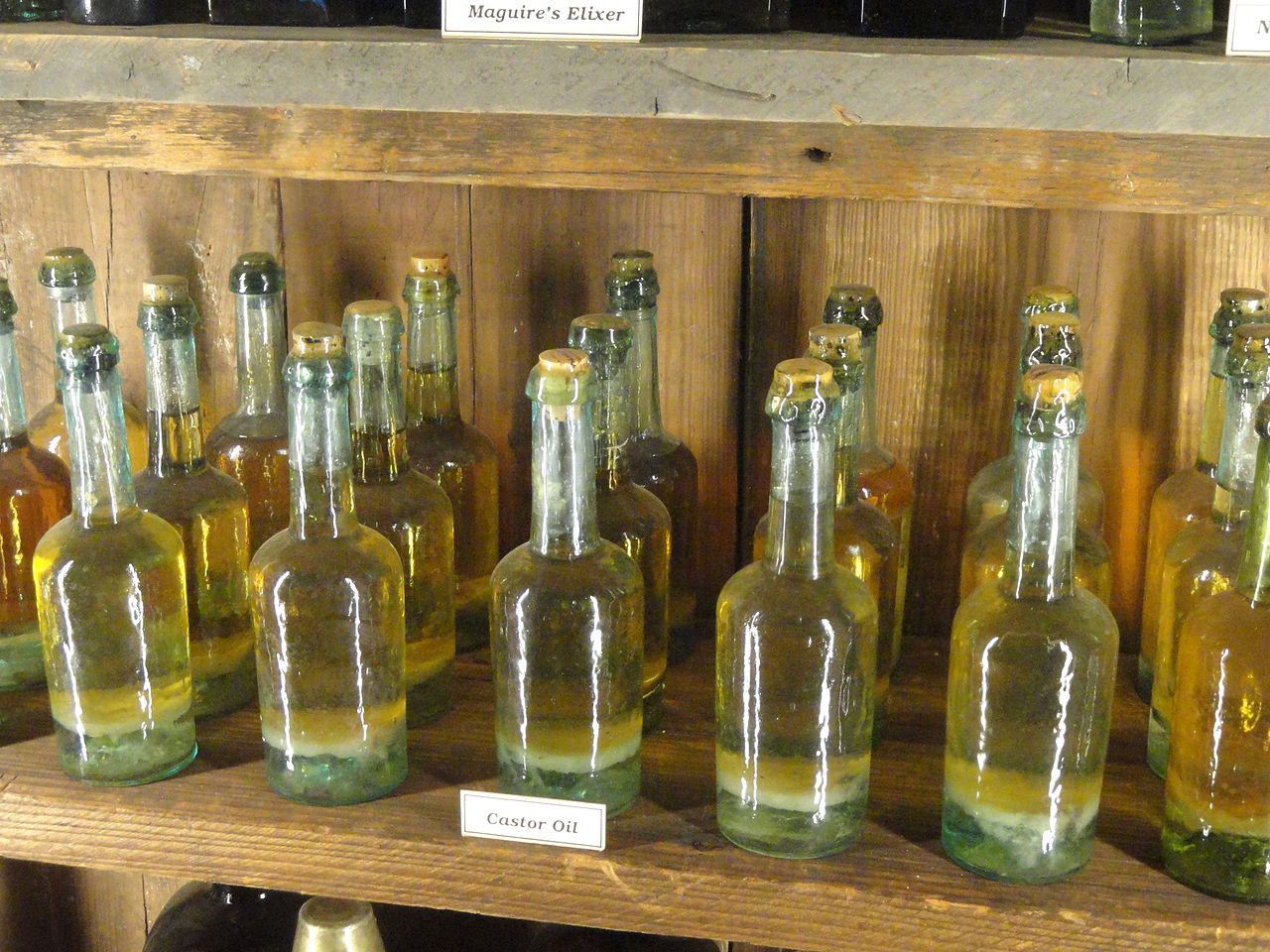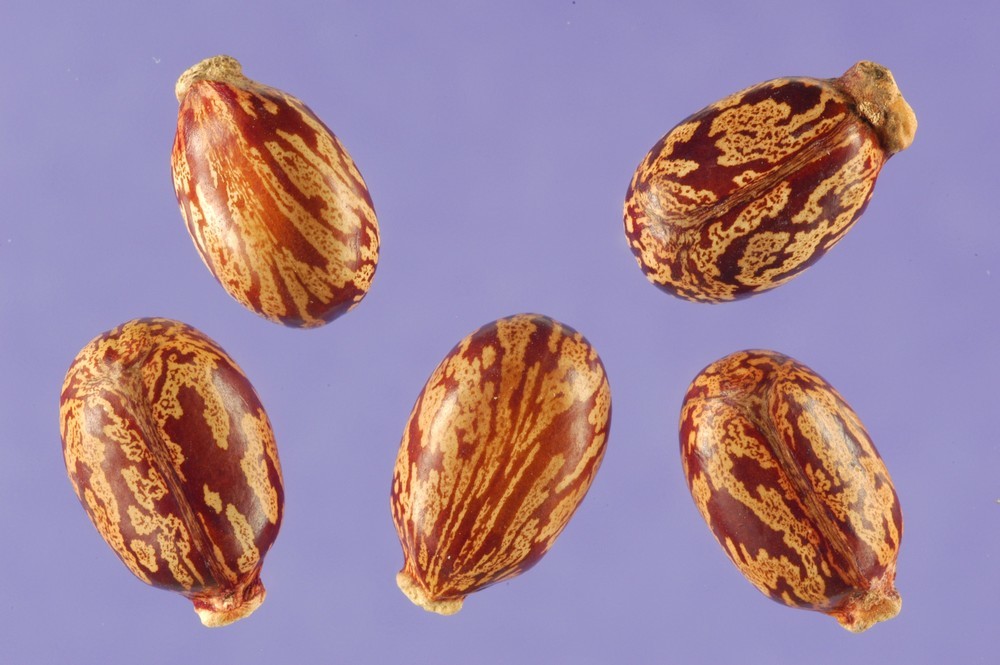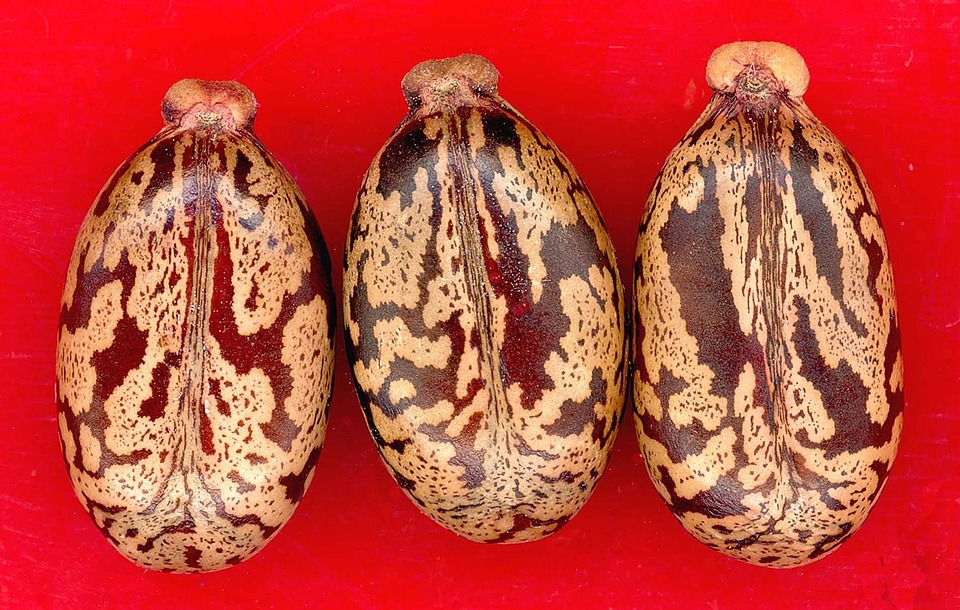Have you been properly introduced to castor oil yet? This ancient natural remedy has several beauty benefits, even though it is often ignored and replaced by its rivals. You might have heard some of these claims: Castor oil for hair growth! Castor oil for healthy skin! Castor oil as a natural mascara! Castor oil for hair loss! Castor oil for acne! Even though every urban legend has a source, no matter how vague it is, this time, a simple vial of thick yellow juice just couldn’t possibly have it all. Or could it?
What exactly is castor oil, really?
Castor oil is a natural plant oil, one of the oldest vegetable oils used in the world. It is obtained from beans of castor oil plant, which goes by the fancy Latin name of Ricinus Communis. Castor oil is fairly popular in many different areas of industry: cosmetic industry, brake fluids for vehicles, various lubricants, dyes, and polishes. It is highly viscous with a subtle oily smell; its name was also an inspiration to an automotive lubricant company Castrol. Yes, castor oil has the ability to hydrate car parts as well as nourish our skin cells. On the other hand, it may also bring back bitter childhood memories of being force-fed a spoonful of this pale yellow liquid back in the day, when grandmothers claimed it healed just about everything.

Castor oil uses
Skin and hair benefits of castor oil can be attributed to Ricinoleic acid, a monounsaturated fatty acid. This acid makes up 80-90% of castor oil and it goes without saying that it is very potent. It is, in fact, this acid that makes castor oil quite special since ricinoleic acid is difficult to find elsewhere in the same amounts. Other components, present in castor oil are oleic and linoleic acid. This concoction is highly beneficial with its anti-inflammatory, antioxidant, antibacterial, antifungal and antiviral properties.
Ricinus oil, as it is also known, has been used for centuries by the traditional and alternative medicine, as well as Ayurveda. It has many both skin and hair benefits when applied topically:
- A great natural remedy for dry skin, acne, rashes, sunburn, stretch marks, warts and boils (3)
- A natural boost to lashes, eyebrows, and hair growth (1)
- It promotes healthier skin and cell rejuvenation
- A natural moisturizer for dry skin and chapped lips
- A natural emollient that stimulates collagen production
Clear or black castor oil?
There are two types of castor oil in the market today that are used for hair and skin benefits and treatments:
1. Clear (normal) castor oil
- Pale yellow colour
- More likely to treat dry and irritated scalp
- Can be consumed internally as well as applied topically
2. Jamaican black castor oil
- Black or dark brown in colour
- Before pressing, the beans are roasted first (hence the dark colour)
- More likely to benefit a healthy scalp to provide an extra cleanse
- Used externally only
There has been no evidence that one type of castor oil is more beneficial than the other. There are claims that support positive results from both types. The basic difference between the two is in the process of extraction. While normal castor oil is made with pressing fresh beans, the beans in Jamaican black castor oil are roasted prior to pressing. That’s where the dark colour comes from since the ash from roasting is added to the oil itself.
A deep past
Hand of the Christ or Palma Christi was the nickname that castor oil got in Europe, and the reason was that the leaves of the plant were said to resemble the hand of the Christ. The healing properties and positive benefits of the plant were, however, well known to many of the ancient and old civilizations long before castor oil’s popularity took off in Europe. It was in Egypt, India, China and Japan that castor oil had been applied topically as a facial oil and ointment for various skin inflammations, irritated eyes, as well as it was taken internally, especially as a natural remedy for constipation due to its powerful laxative properties.
It was only in the 20th century with Edgar Cayce, an American mystic, that the health benefits of castor oil were getting more public attention in the West. Cayce considered castor oil packs and massages a central part of his therapies; he also claimed that castor oil relieved pain, increased blood and lymphatic circulation, relieved headaches and nausea. (2)
Nowadays castor oil and its derivatives are used in many different industries, including pharmaceuticals, automobiles, soaps, and perfumes. In naturopathy, castor oil has been used as a natural remedy for many conditions, but one of its most popular uses has been in the beauty industry for cosmetic products.
Where does castor oil plant come from?
Ricinus communis, or castor oil bush is, in fact, a shrub that can reach the size of a small tree. It is a perennial plant, which means it lives several years, opposed to annual or biennial plants, which are shorter-lived plants.
Originally, the castor bean plant grew in eastern Africa, India and in the south-eastern part of the Mediterranean, but it has spread to the tropical regions and other temperate parts of the world as a decorative plant as well, for instance in southern England.
How is castor oil made?
While a number of people nowadays use castor oil for hair or skin health and treatment not many of them come to associate this beneficial fluid with poison. Once used by secret agents and assassins in the military, castor oil has managed to overcome its once bad reputation.
Black and brown coloured castor seeds or rather beans are a source from which the famous castor oil is made. They grow in spiky pods and once the pods open, the beans are ready for harvest. The castor oil extraction is a thorough process since in its basic form, the castor plant and its seeds contain one of the most powerful poisons, namely ricin. By eating only a small amount of the raw castor beans, can easily be fatal for the consumer.
Ricin is can be found in the stems and leaves of the castor plant, as well as castor bean pulp, but this poisonous component is not present in the oil. The castor oil itself, once it has gone the process of extraction and filtration, is free of any toxins and it possesses a ton of positive benefits.
Castor bean oil extraction
There are two ways to obtain castor beans: the castor plants can be either grown commercially on plantations, or castor beans can be harvested from the wild plants. When it comes to the extraction of the oil from the beans, the procedure is more or less similar to that of other oils.
- Harvesting the plant
- After the harvest, castor beans are hulled either by hand or the machine
- The beans are then cleaned, cooked and dried prior to the extraction process
- The beans are cold-pressed
- After the oil has been extracted, it is cleaned of any impurities by filtration
Castor Oil Uses
All of the positive properties of castor oil together make a healthy tonic for hair health, with its antibacterial and antifungal benefits. Remember, castor oil contains antioxidants which protect the skin cells from the free radicals. It has warming properties, which boost blood and lymph circulation and last but not least, that famous ricinoleic acid could even be responsible for balancing out the pH of the scalp and restore it.
- Boosts hair growth (three times the growth!)
- Improves circulation in the scalp area
- Prevents hair loss
- Aids with scalp infections
- Helps with dandruff
- Works as a natural conditioner
- Balances the scalp pH
- Promotes stronger and healthier hair
- Repairs split ends
- Adds a natural shine to the hair
Applying castor oil for hair growth
Even though there is no official scientific evidence that castor oil really boosts hair growth, there are however dozens of testimonials from users claiming the exact opposite.
It’s fairly simple to add castor oil to your weekly hair care routine. Apply the oil to your scalp and hair slowly and thoroughly. Since it has a thick viscous texture, a little goes a long way. After you’re done, cover your hair with a shower cap and leave it on for a few hours or overnight. Afterwards, wash your hair as you normally would.
Tips on applying castor oil to your hair:
- For best results, apply the oil once or twice a week
- Castor oil works best on damp hair (not soaking wet nor dry). The easiest way is to use a spray bottle with water to dampen everything from the scalp to the ends of your hair
- When applying castor oil, massage the scalp well. This way you’ll boost the circulation. Since the oil has antibacterial properties, it should help restore your scalp’s health gradually.
(1) https://books.google.co.in/books?id=GczGyHKtcvQC&pg=PA223&dq=castor+oil+anti+inflammatory&hl=en&sa=X&ved=0ahUKEwjwqqDMwMzKAhXDwo4KHU7HAyEQ6AEIGzAA#v=onepage&q=castor%20oil%20anti%20inflammatory&f=false
(2) http://cayce.com/health-solutions/edgar-cayce-castor-oil/
(3) http://www.ndhealthfacts.org/wiki/Castor_Oil





